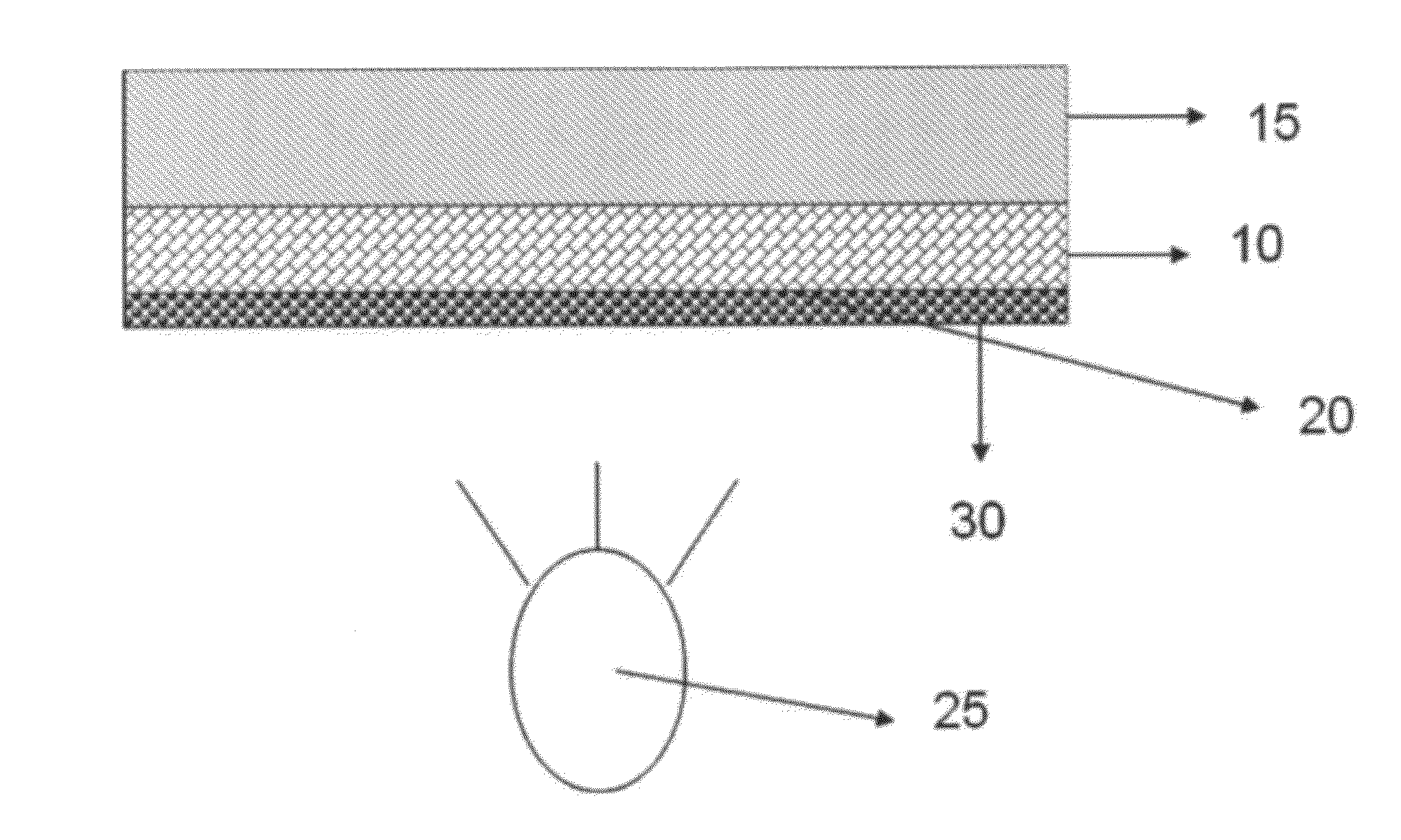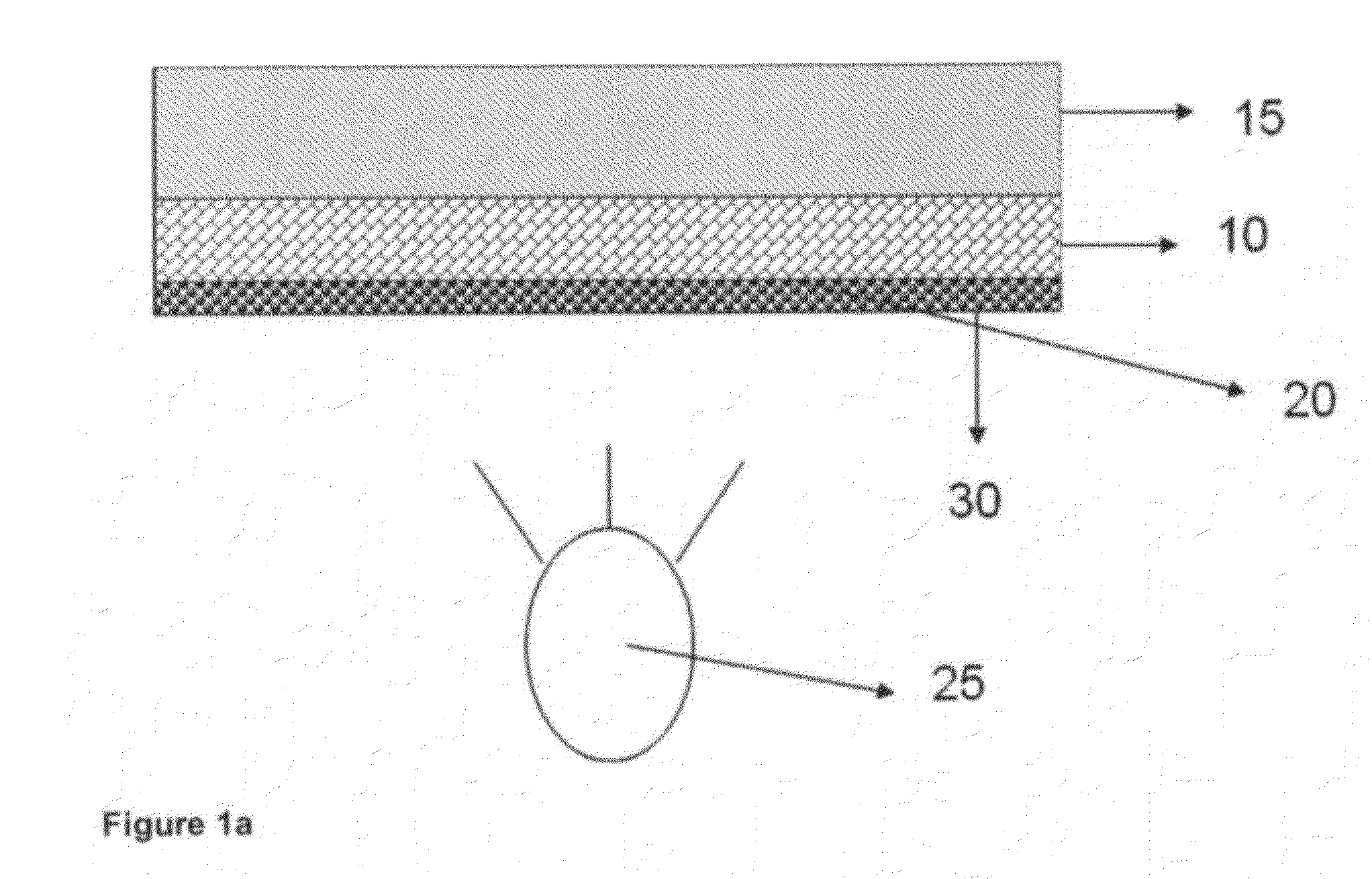Color-shifting reflector
a color-shifting reflector and reflector technology, applied in the field of light-emitting industries, can solve the problems of low efficiency of leds, reduced leds unsuitable for certain applications that require uniform white light, so as to reduce the efficiency of led systems, reduce cost, and increase the effect of yield loss
- Summary
- Abstract
- Description
- Claims
- Application Information
AI Technical Summary
Benefits of technology
Problems solved by technology
Method used
Image
Examples
example 1
Reflectance Measurement
[0048]Example 1 measures the reflectance of a diffusive light reflector without color shift layer (Sample 1), and three aspects of the disclosed diffusive light reflector with color shift layer (Samples 2-4). Results are reported in FIG. 4. Here, the diffusive light reflectors with color shift layer (Samples 2-4) showed improved reflectance between 550 nm and 650 nm over a reflector without the color shift layer (Sample 1). Furthermore, between about 560 nm and 640 nm, the reflectance of the disclosed reflectors with color shift layer is greater than 100%, indicating a color shift from the cooler LED blue light to a warmer white light. The LED light source was the indirect optic system described above.
example 2
[0049]Example 2 measures spectral response as a function of wave length (nm) of Samples 1-4, shown in FIG. 5. Here, Samples 2-4 showed an increase in spectral response and a shift in the spectrum, which indicates increased efficiency and white light output. Further, Samples 2 and 3 showed a decrease in CCT from 5790 Kelvin (Sample 1) to 4440 Kelvin and 4380 Kelvin, respectively. Also, the CRI remained relatively constant from 72.1 Ra (Sample 1) to 70.0, 69.2, and 68.8 for Samples 2-4, respectively. The LED source was the indirect optic system described above.
example 3
Light Output
[0050]Example 3 measures light output as a function of time of Samples 1-4, shown in FIG. 6. The LED source was the indirect optic system described above.
PUM
 Login to View More
Login to View More Abstract
Description
Claims
Application Information
 Login to View More
Login to View More - R&D
- Intellectual Property
- Life Sciences
- Materials
- Tech Scout
- Unparalleled Data Quality
- Higher Quality Content
- 60% Fewer Hallucinations
Browse by: Latest US Patents, China's latest patents, Technical Efficacy Thesaurus, Application Domain, Technology Topic, Popular Technical Reports.
© 2025 PatSnap. All rights reserved.Legal|Privacy policy|Modern Slavery Act Transparency Statement|Sitemap|About US| Contact US: help@patsnap.com



